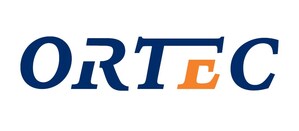Workforce Scheduling at Airports: Organizing the Beehive With Airtight Scheduling and by Thinking 'Out of the Cell'
ZOETERMEER, The Netherlands, March 8, 2016 /PRNewswire/ --
Airports are buzzing with activity 24/7. A variety of personnel with different tasks need to function as a single organism to perform well, just as in a beehive. From cleaning to security, emergency response, information desks, maintenance and trolley logistics, the right person has to be at the right spot to prevent dissatisfaction or even delay. The importance of seamless workforce scheduling at airports is obvious, as well as the specific challenges which have to be overcome. This article describes the specific challenges of workforce scheduling at airports and how to address them.
Challenges of airports: 24/7 activity, flexibility and airtight security
Managing the activities around an airport is complex due to their 24/7 character, the crucial interdependencies and the importance of providing airtight security, especially when it comes to personnel.
The main challenge in airports, is to manage:
- A variety of facilitating services with their own staffing restrictions and needs.
- A variety of restrictions due to the different applicable Collective Labor Agreements or laws.
- A large flexible workforce during the peak seasons from May to September and during December.
- Complex schedules which often run 24/7 and are regularly interdependent.
- The support of an airtight security system.
The solution is to choose a flexible and reliable smart system which is able to:
- Schedule different departments with a variety of restrictions.
- Offer self-scheduling and/or shift bidding so people can schedule themselves. This saves planning time and creates a better balance between work and private life which leads to less absenteeism and increased productivity.
- Integrate the scheduling system to communicate with the main HRM and Payroll systems, to prevent errors and save time.
- Prevent people from scheduling whose access to the airport has been denied.
- Schedule flexible workforces with a variety of contracts.
The reality of workforce scheduling at airports and the gap with contemporary possibilities
To some workforce schedulers at airports, the description of a flexible, reliable and smart system must sound like science fiction, because even nowadays a lot of them still perform their planning activities manually and/or with Excel. However, it really does exist!
Mr. Michael Timmermans, specialized in Human Logistics Management, has experienced the progress achieved by using ORTEC Workforce Scheduling for the Schiphol Group. Mr. Timmermans explains: "The software system is used for a selected number of services, to schedule airport operations airside, passenger services, security, technical operations, maintenance and emergency response. But the system is also able to apply more complex restrictions, which makes it suitable for civil servants like customs and the military police, who are not allowed to work all weekends or the nightshift after they've reached a certain age. The system really supports the management of complex challenges like ageing, fluctuations in workload and exchanges, even over the longer term."
Although the system is able to handle different departments, organizations and complex restrictions, the endless possibilities are not yet being used. Mr. Timmermans explains: "We all want to maintain the status of Schiphol as Europe's preferred airport, but that is easier said than done. Schiphol is serviced by a combination of at least twenty different commercial and civil organizations and looks a lot like a beehive with layers of honeycomb and many different cells. The challenge is to think beyond perceived boundaries or differences. All play a key role in executing key processes concerning the passengers. It would be a lot easier and less time consuming if we were to focus on the process and have everybody use the same system. There are possibilities for exchange at peak times, when scheduling is based on skills, location and availability, instead of the department somebody belongs to. It just takes a different mindset and the will to share information. If we did that, it would be easier and cheaper to share and solve our shared challenges like peak time, ageing and exchanging, even over the longer term."
Optimal use of systems comes with a learning curve
It does seem to be more the rule than the exception for it to take time to use the systems better. André Oostveen, Field Service and Workforce Scheduling expert at ORTEC, explains: "Most of the time, the primary need of organizations is to improve the scheduling process. Once they are used to the new system and processes, planners are able to experiment and explore. When they discover the possibilities, the need for a more optimal use grows. And that's what we typically hear from our customers; the system offers a lot more than they asked for, and it just takes learning time and a different approach to put the tools to better use."
About ORTEC
ORTEC is one of the largest providers of advanced planning and optimization solutions and services. Our products and services fully optimize fleet routing and dispatch, vehicle and pallet loading, workforce scheduling, delivery forecasting, logistics network planning, and warehouse control. We offer stand-alone, custom-made and SAP® certified and embedded solutions that are supported by strategic partnerships. Our 750 employees support over 1,800 customers worldwide from offices in Europe, North America, South America, and Asia Pacific.
http://www.ortec.com
SOURCE ORTEC
WANT YOUR COMPANY'S NEWS FEATURED ON PRNEWSWIRE.COM?
Newsrooms &
Influencers
Digital Media
Outlets
Journalists
Opted In



Share this article